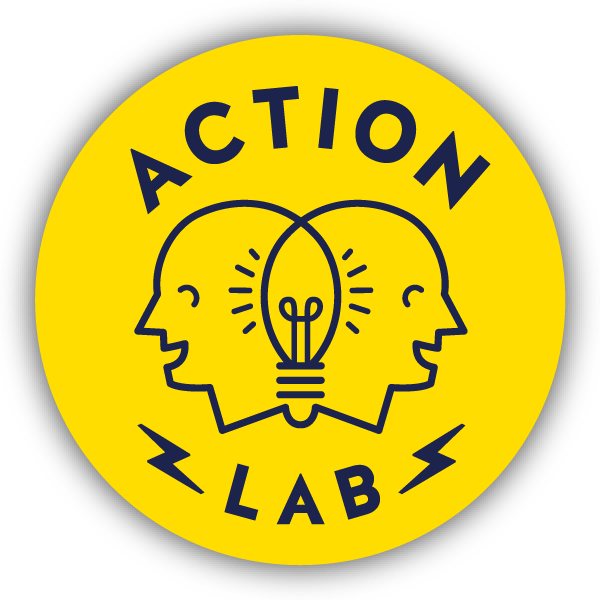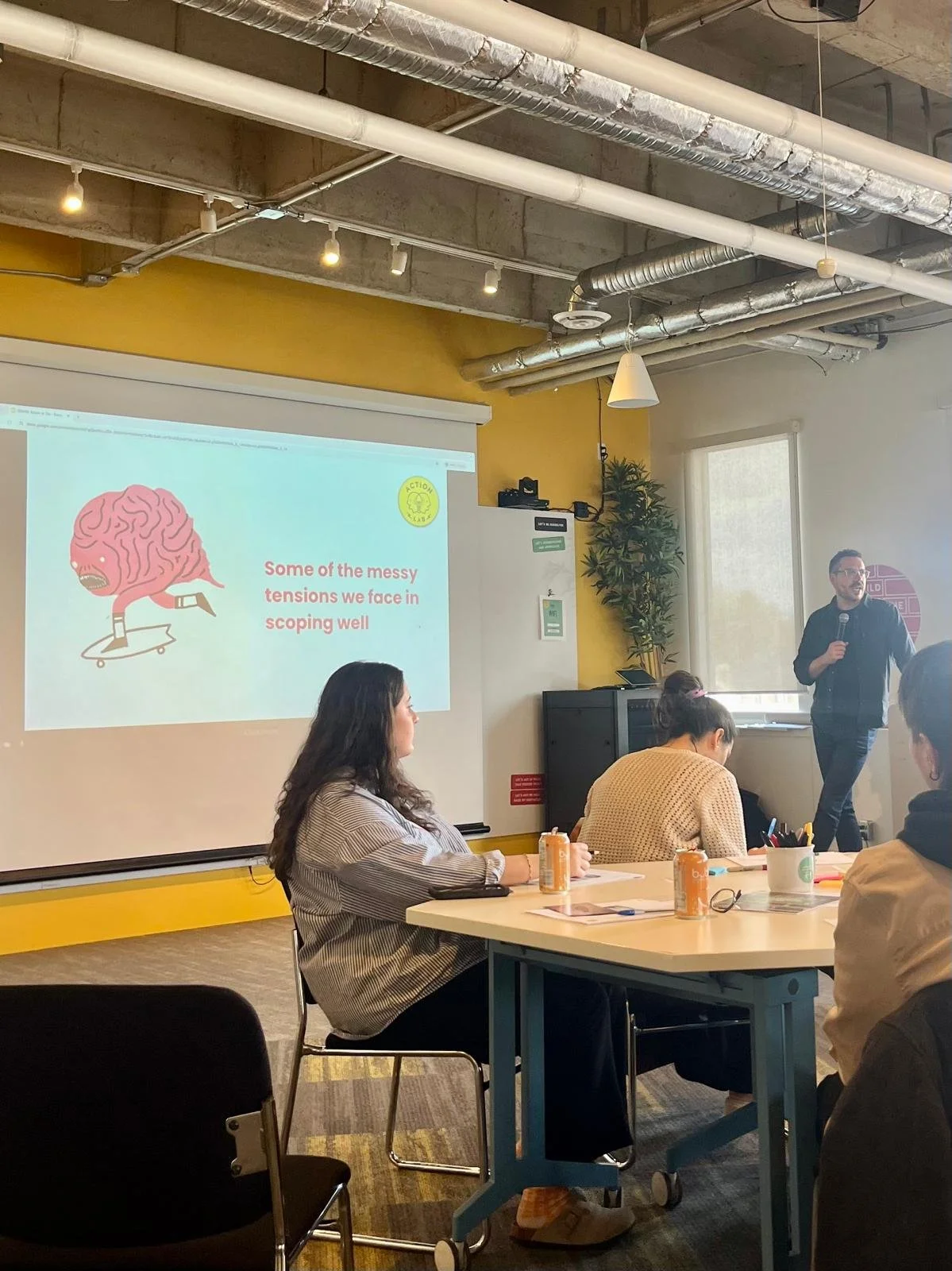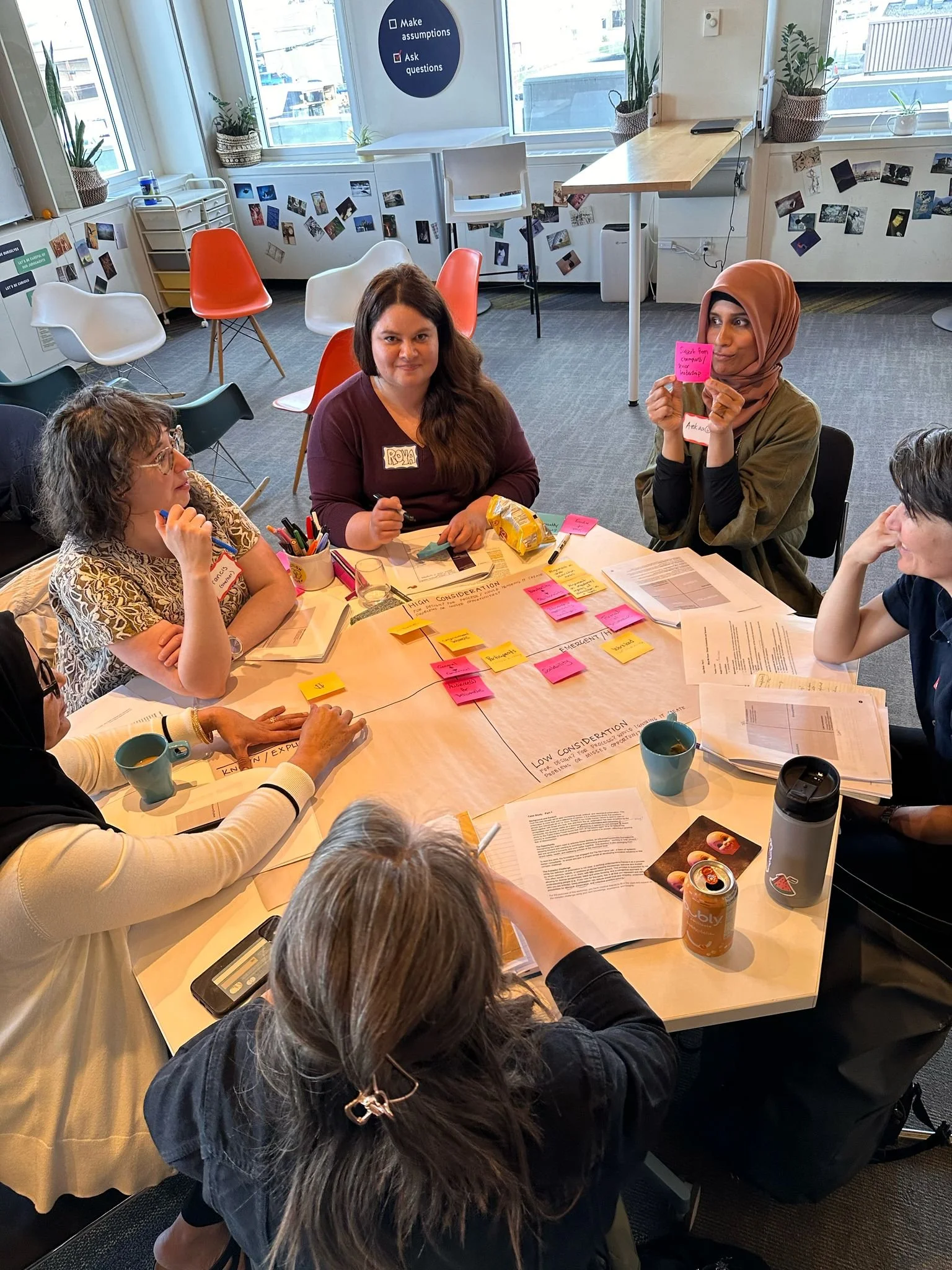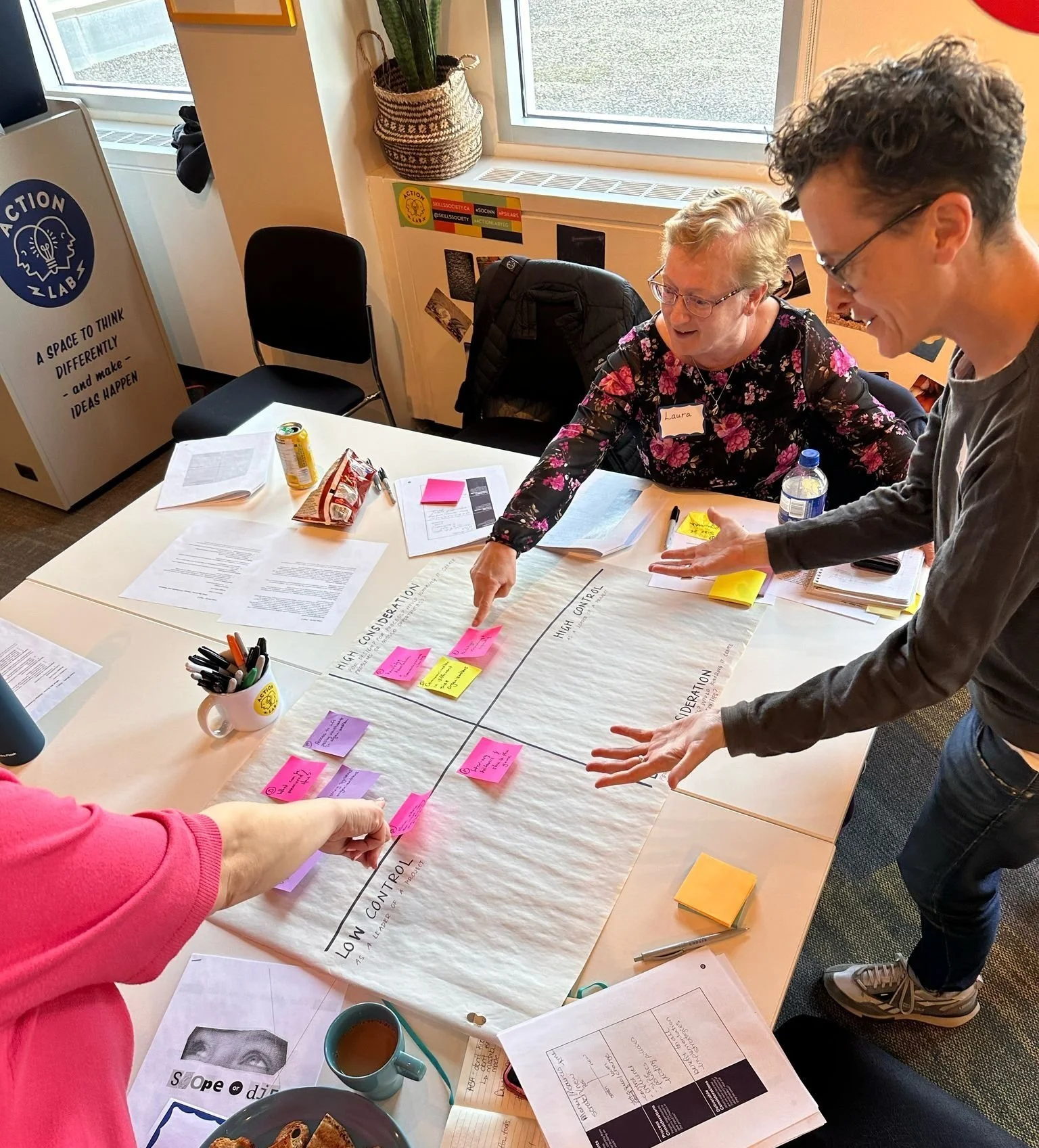Scope or Die
A Tool for Making Sense of Complex Challenges
Scoping can feel like one of the hardest parts of any project. Before we even get to the design work, we are often faced with vague asks, big expectations, and a whole lot of unknowns. That’s especially true in systems change work and social innovation.
Scope or Die was created as a response to that feeling. It’s a tool for teams, labs, and changemakers who are trying to get grounded before jumping in. It’s not a checklist or a step-by-step process, it’s a flexible framework that helps you pause, reflect, and figure out whether the challenge in front of you is actually scoped well enough to begin.
The tool walks you through four stops that support different kinds of sensemaking and alignment. It includes remixable prompts and activities adapted from resources like Think Jar Collective, CoLab’s Follow the Rabbit, and Nesta’s DIY Toolkit. Attribution to these sources is included throughout the PDF.
Thanks to our Systemic Design Exchange (SDX) community of practice for helping us test and evolve the tool.
Ben introduces scoping tensions during the SDX 49 session.
Participants from SDX Community of Practice test the tool by mapping tensions on a 2x2 grid.
Participants from SDX Community of Practice test the tool by mapping tensions on a 2x2 grid.
What is in the tool?
The resource is organized around four flexible stops. You can move through them in any order and loop back as needed.
Stop One: Getting Grounded
Reflect on what is being asked, where the work is coming from, and whether a innovation approach fits. Surface early signals of success, constraints, and the broader landscape.Stop Two: Nebulous Story
Start gathering what you know, what you do not know, and what assumptions might be shaping the work. Build a shared narrative and highlight areas that need more exploration.Stop Three: Setting the Frame
Begin to narrow in. Draft “how might we” questions, identify tensions and edge cases, and shape a clearer brief for the work ahead.Stop Four: Iterate
Keep the scope alive. Use this to stop, reflect, adjust, and revisit your framing as things evolve or new insights emerge.Other helpful tools you might play with when scoping
At the end of the PDF, you will also find a section called Other Helpful Tools You Might Play With When Scoping. It is a short collection of tools and frameworks we often use in early project work. They are drawn from a variety of sources and are meant to spark ideas, support conversation, or offer a fresh entry point when you are feeling stuck.
Try it out
If you are at the beginning of a project and unsure where to start, or halfway through and wondering what went sideways, we hope this tool helps you pause and build a shared sense of direction. You can view or download and print the tool below. There are also links to canvases to work from within the document.
Let us know how it goes. Scoping is not about getting it perfect. It is about being thoughtful, curious, and clear on where you are headed and why.



